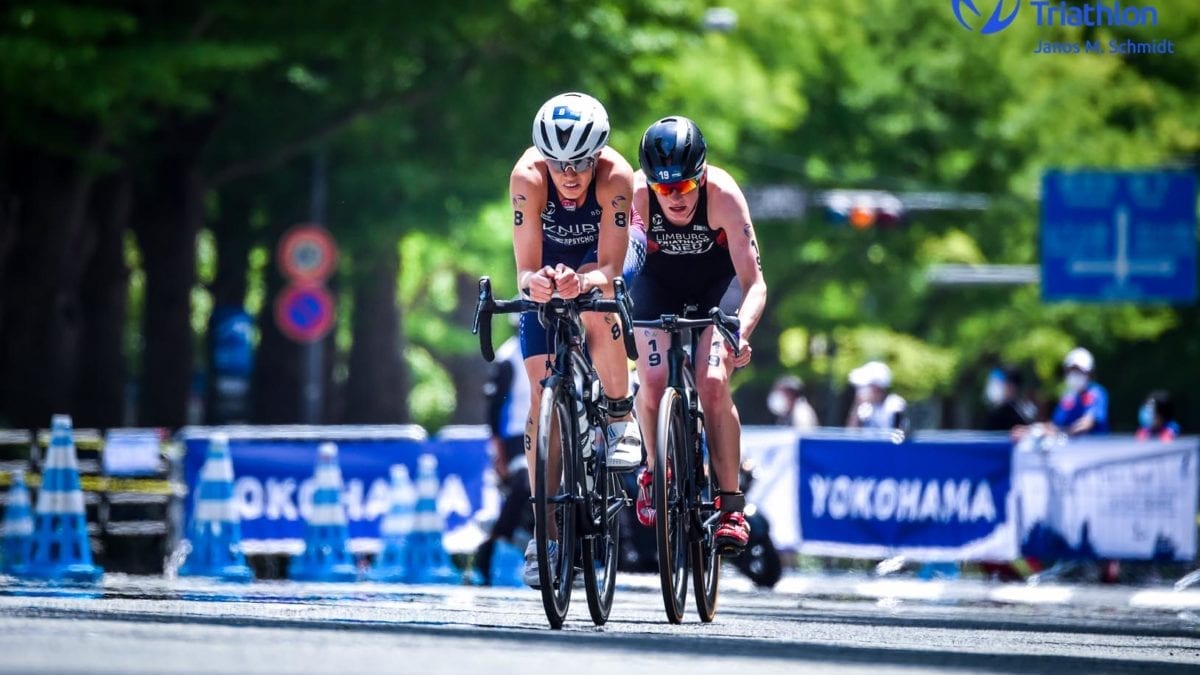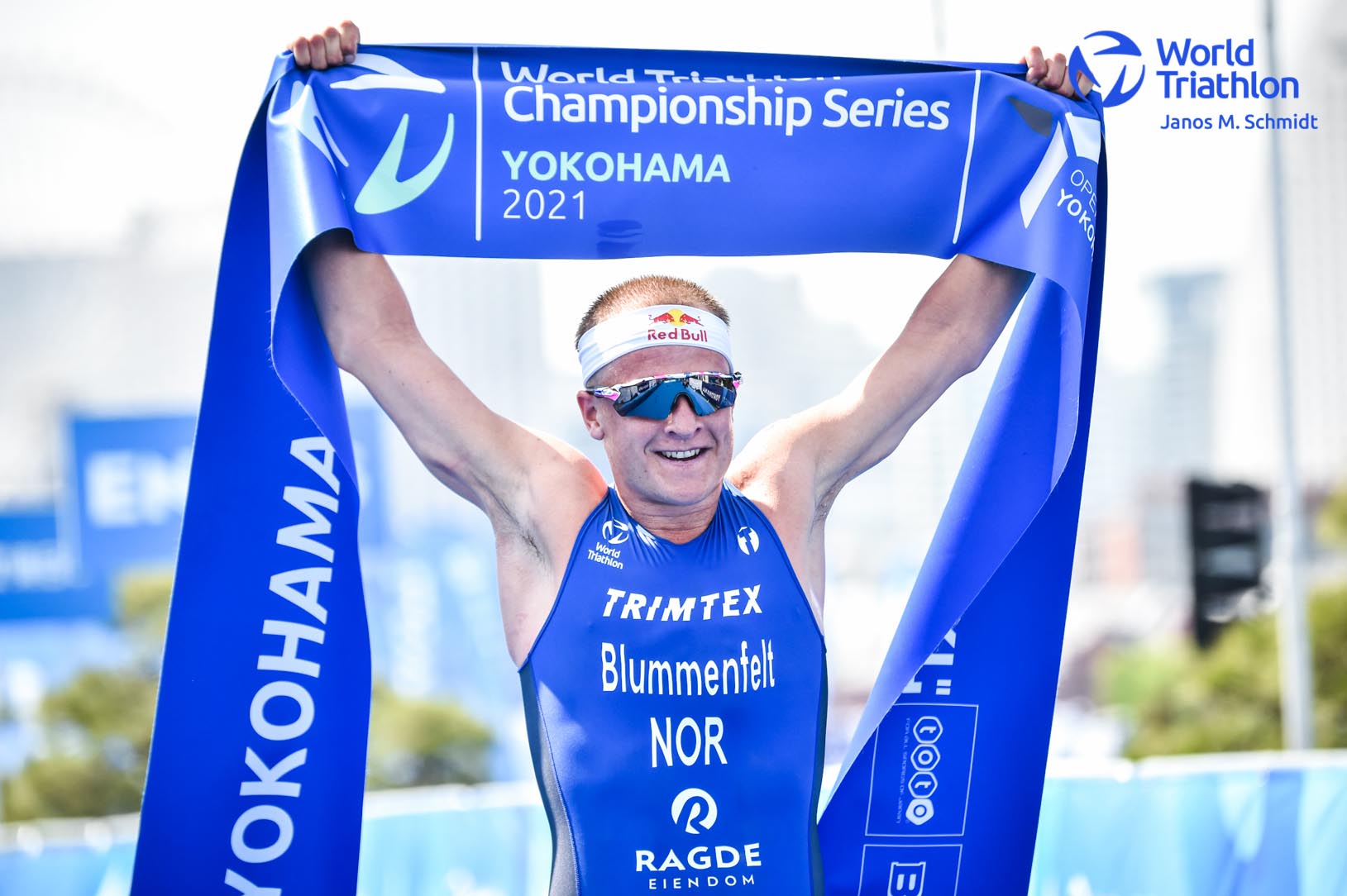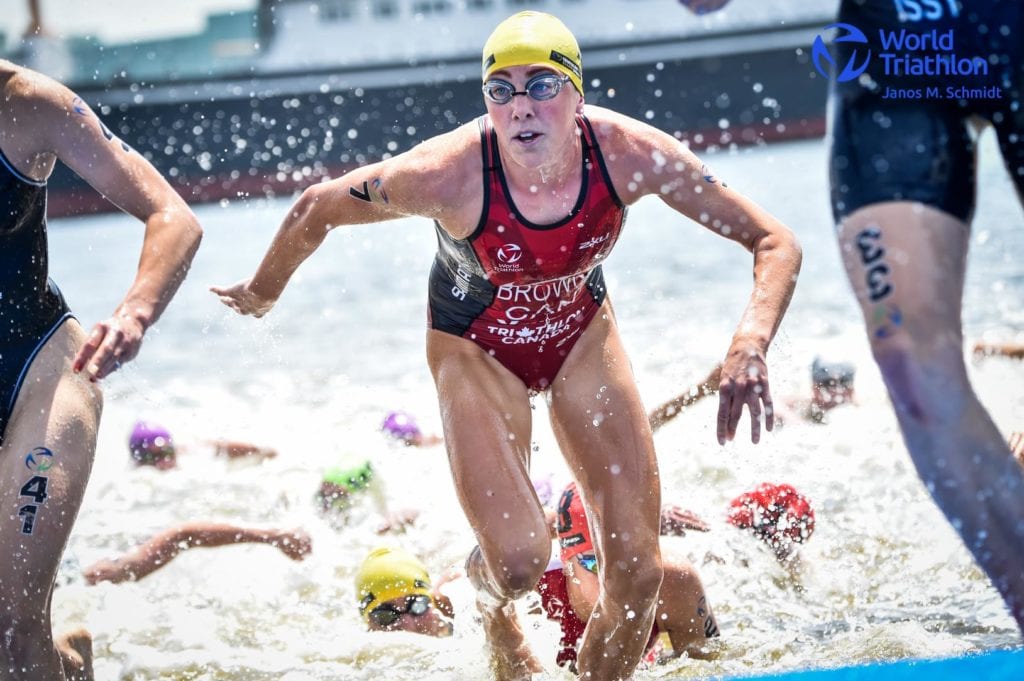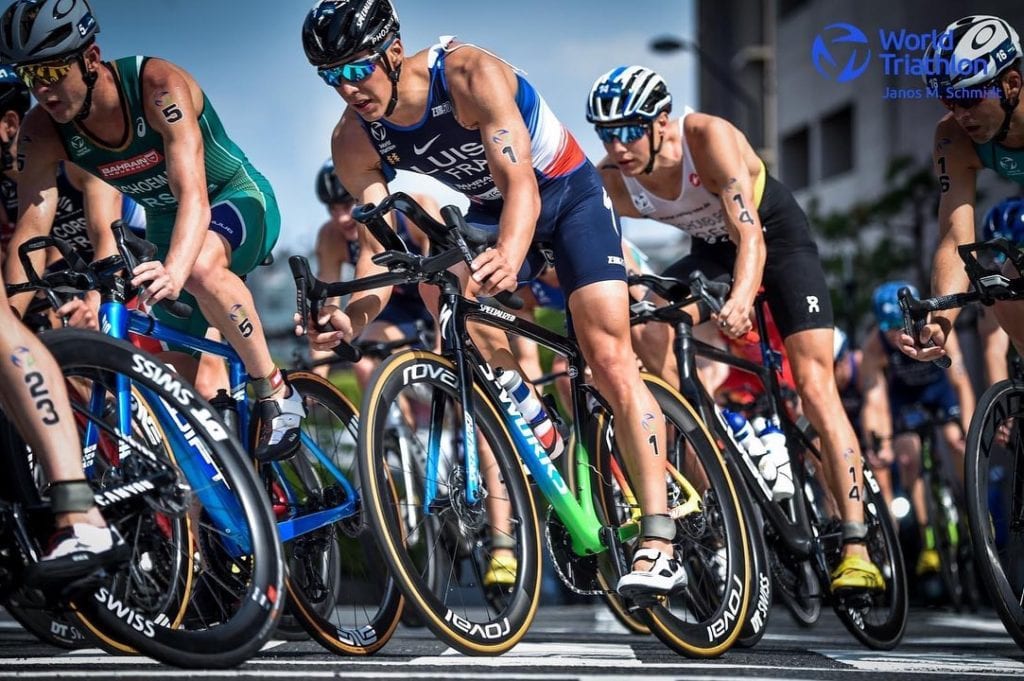A pro triathlete’s 5 takeaways from WTCS Yokohama
Quebec pro Antoine Jolicouer Desroches looks back at some of the things that stood out for him at the race in Japan this weekend.
 Photo by:
Janos Schmidt/ World Triathlon
Photo by:
Janos Schmidt/ World Triathlon
Lire cette histoire en français
This weekend was the World Triathlon Championship Series race in Yokohama, Japan. It was a very important triathlon for several reasons. First, triathletes who have not yet qualified for the Olympic Games wanted to demonstrate to their federation that they are the best athlete to represent their country. Also, since it’s been a long time since these athletes competed, it was a great opportunity for them to compare themselves to their competitors just a few months before the Olympic Games.
Here are five things I learned from this race:
Americans (especially American women) are dominant
American Taylor Knibb surprised many with her win in Yokohama thanks to an aggressive breakaway on the bike (photo above). She decided to escape with the Dutch athlete Maya Kingma. The duo managed to create a lead of more than two minutes on the peloton. Knibb quickly took the lead on the run which ended not with the victory, but also Olympic qualification. Her compatriot Summer Rappaport, who was part of the main peloton, ran the fastest 10 km to catch Kingma and climb to the second step of the podium. Rappaport, however, had already secured her Olympic qualification in 2019 at the test event in Tokyo. Another American, Taylor Spivey, managed to finish in the top 5, but she was disappointed with this result. She obviously wanted to finish ahead of her compatriots to get her Olympic qualification.
As a result, the United States has become a dominant nation on the women’s side. One would have thought, following Gwen Jorgensen’s decision to stop triathlon to focus on running in 2016, that the chance for a medal at the Olympic Games for the USA would be low, but it appears the United States has incredible depth of talent among women.
In men’s, there is not as much talent, but there are still a few American triathletes who are able to get on a podium in a World Triathlon event. Matt McElroy achieved this feat in 2019 by finishing second in the Leeds World Triathlon triathlon, and this weekend his compatriot Morgan Pearson finished third, which netted him Olympic qualification.
The other two American triathletes had a rough day. Ben Kanute was 37th, and Matt McElroy was 24th. McElroy suffered a knee injury three weeks before the triathlon and had to receive two cortisone injections just to be able to take part, so if he can recover quickly from that injury he should be able to get closer to the podium.

Superb performance by Blummenfelt
Kristian Blummenfelt finished the 2020 season with a leg injury that prevented him from taking part in the PTO 2020 Championship at Challenge Daytona. At the start of the season, we could question his fitness, but Blummenfelt showed that he has regained his form. The Norwegian team spent the spring at high altitude in Sierre Nevada and this work paid off. He managed to run faster than Vincent Luis, Jelle Geens, Morgan Pearson and Alex Yee to fly to victory. The Norwegian thus demonstrated that he is one of the favourites for victory at the Olympic Games. I also have the impression that Norway could surprise us in the mixed relay at the Olympics. The men are obviously very talented and, on the women’s side, two Norwegians finished 24th and 25th in Yokohama. They are very young and have little experience in triathlon, so they are likely to improve very quickly. Norway could, therefore, be very competitive in the mixed relay.

Canada
Amélie Kretz finished 33rd. She would have liked to have performed better on the run to get a better result. However, she has shown that she can get out of the water in the top 10, which is excellent. She actually was eighth out of the water, just 10 seconds behind swim-leader Rappaport. Canada will want to select a triathlete who is able to get out of the water first in the mixed relay, as that event starts with the women. So, by showing that she is among the best swimmers, she demonstrated that she can offer a great performance during the relay. If she can be among the leaders in swimming and cycling, and thus hand off to her male compatriot amongst the leaders, this helps maintain the medal chances for Canada.
Her compatriot Joanna Brown finished 13th. Brown finished third in the World Triathlon in Bermuda in April 2019, so she has the ability to finish on the podium in a high-level triathlon. This result is not exceptional, but it is a good result and she still has several months to improve between now and the Olympic Games.
Disappointing performances
Vincent Luis was expected to win, or at least a podium. The Frenchman finished sixth after running the 10 km 30 seconds slower than Blummenfelt. This result would be very satisfying for any other triathlete, but with Luis our expectations are always very high.
Jonathan Brownlee was also expected to perform better and finished 23rd. Brownlee is already qualified for the Olympic Games, but this weekend the top English triathlete was Alex Yee who finished fourth.
Katie Zaferes, who is currently ranked first in the world, finished 22nd which is definitely a disappointing result, especially since her fellow Americans performed very well.

Vincent Luis’ custom aerobars
Although the bike portion was not a determining factor in the men’s race, unlike the women’s race, it can be expected that in Tokyo there will be several attempts to escape on the bike, which is why it will be important to be aerodynamic if you are in a breakaway with just a few others. For some time now, short-distance triathletes have been paying more attention to their position on their bikes and their aerodynamics. For example, Vincent Luis, who until now hasn’t ever used aero-bars on his road bike, used custom aero-bars this weekend. It appears that he used aero-bars from the company Uniquo custom, the same company that created some custom aero-bars for a few athletes racing at Challenge Daytona. Jonas Schomburg also appeared to be using custom aerobars. Triathletes like Luis, Schomburg and South Africa’s Henri Schoeman have every interest in being as aggressive as possible when cycling so as not to start running alongside Blummenfelt, Yee and Pearson. So, by optimizing their aerodynamics in this way, they give themselves as many chances as possible to be able to escape on the bike.
Pro triathlete Antoine Jolicouers Desroches is a regular contributor to Triathlon Magazine Canada.
